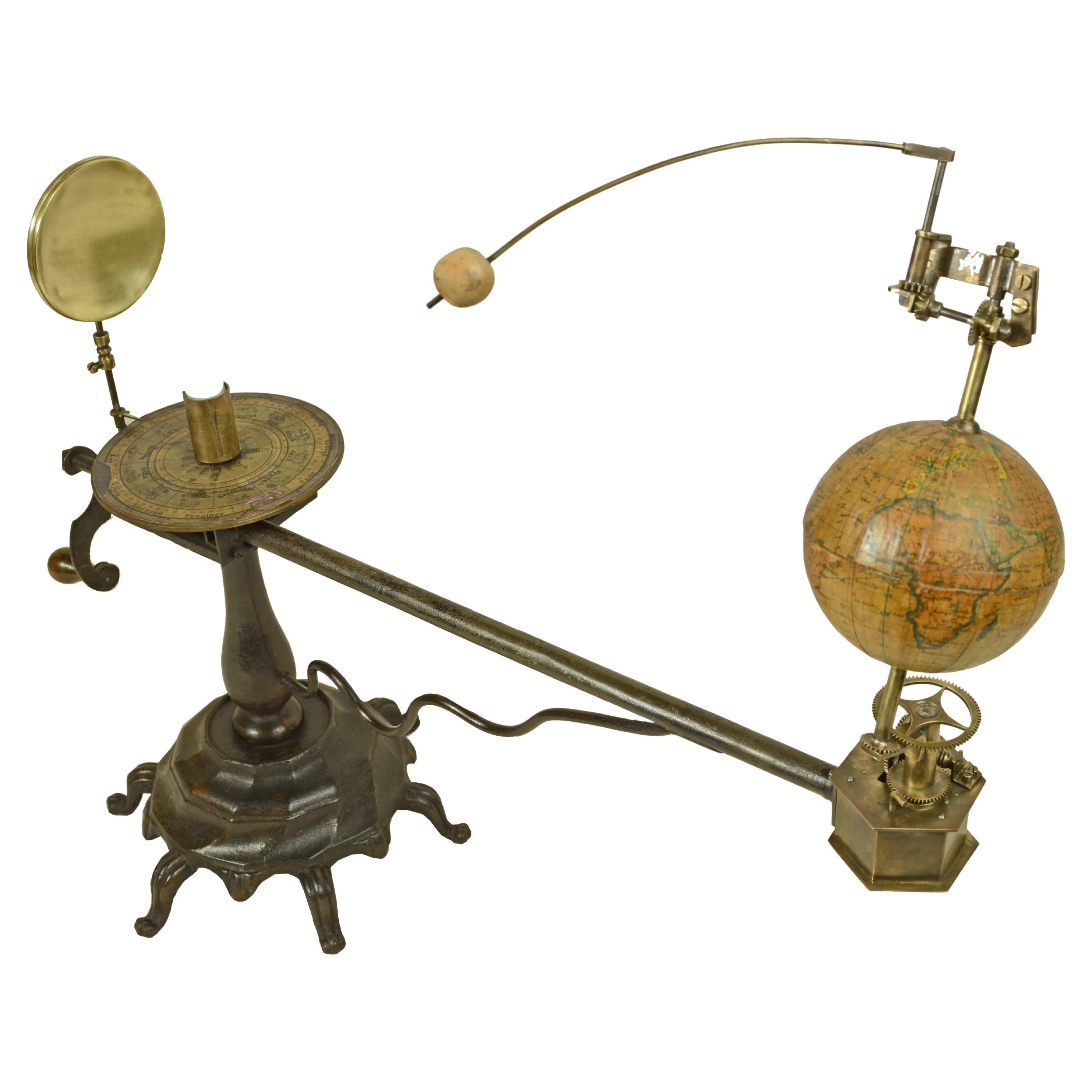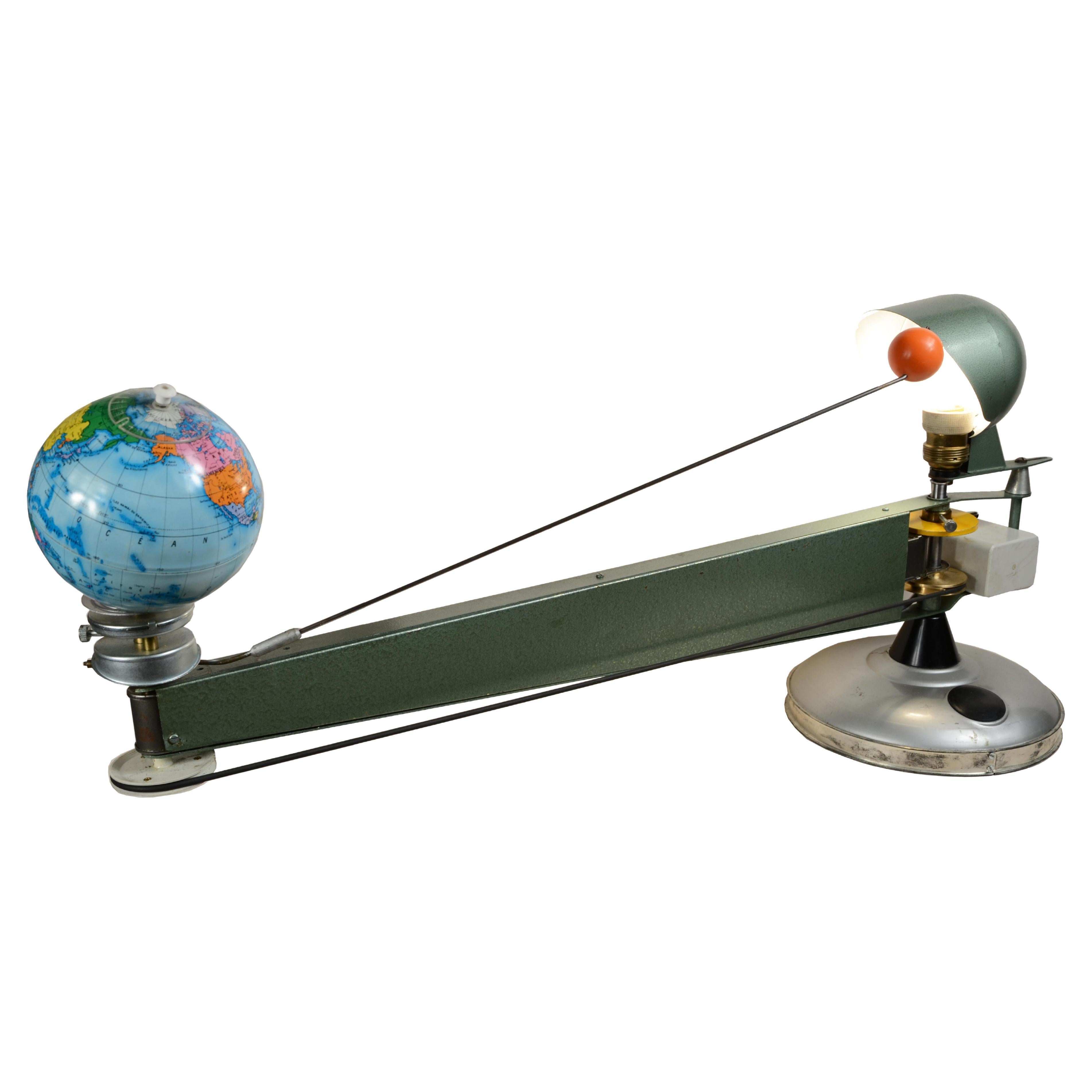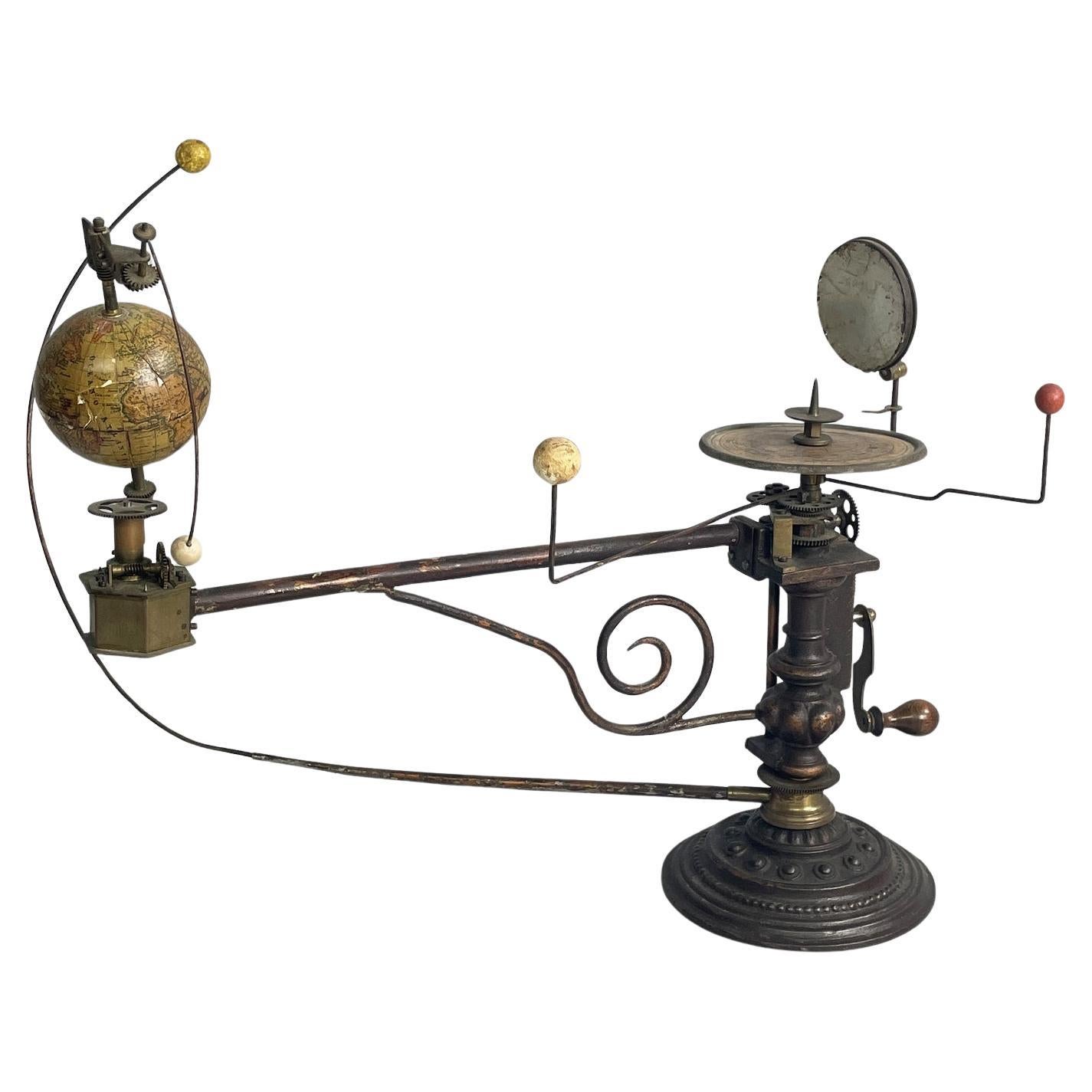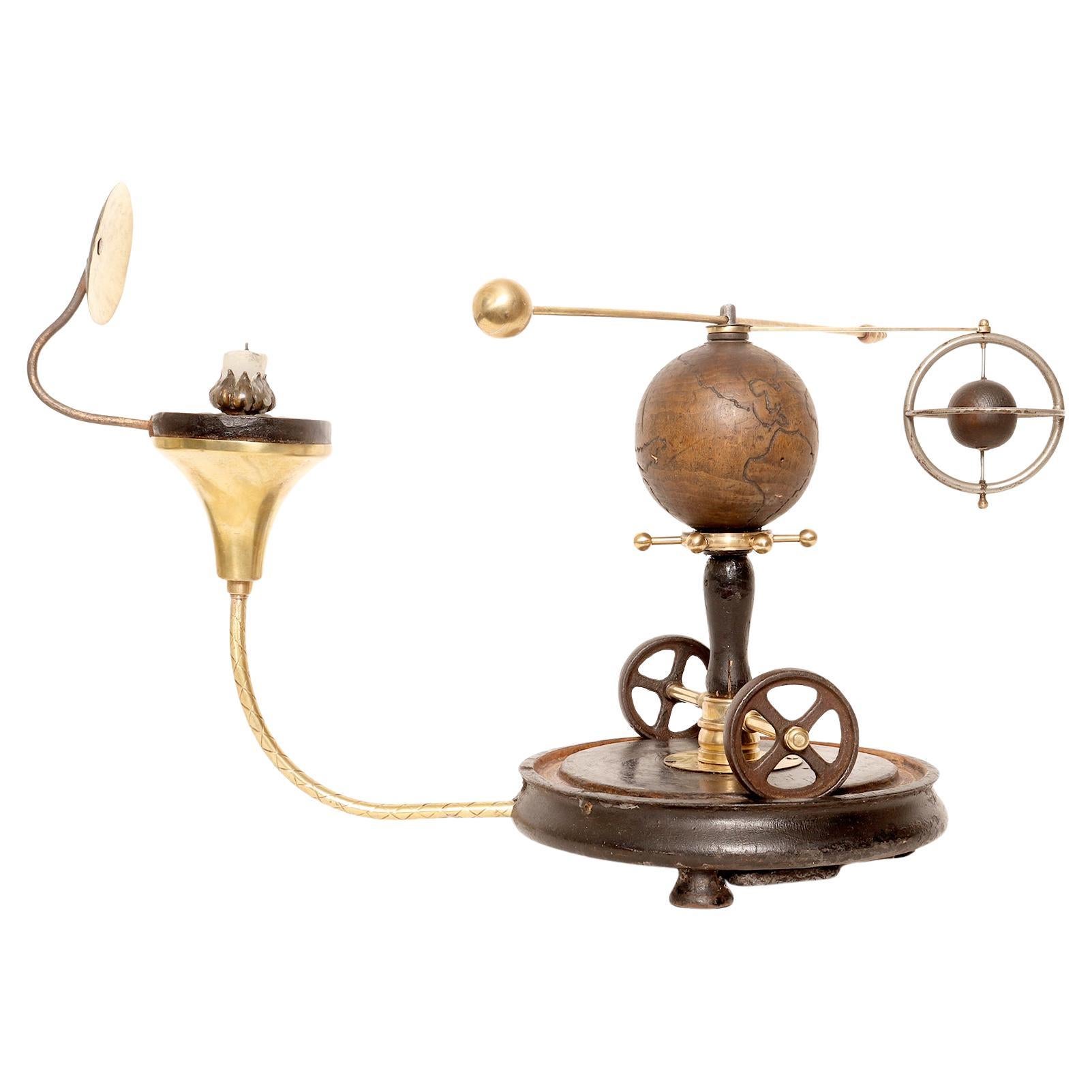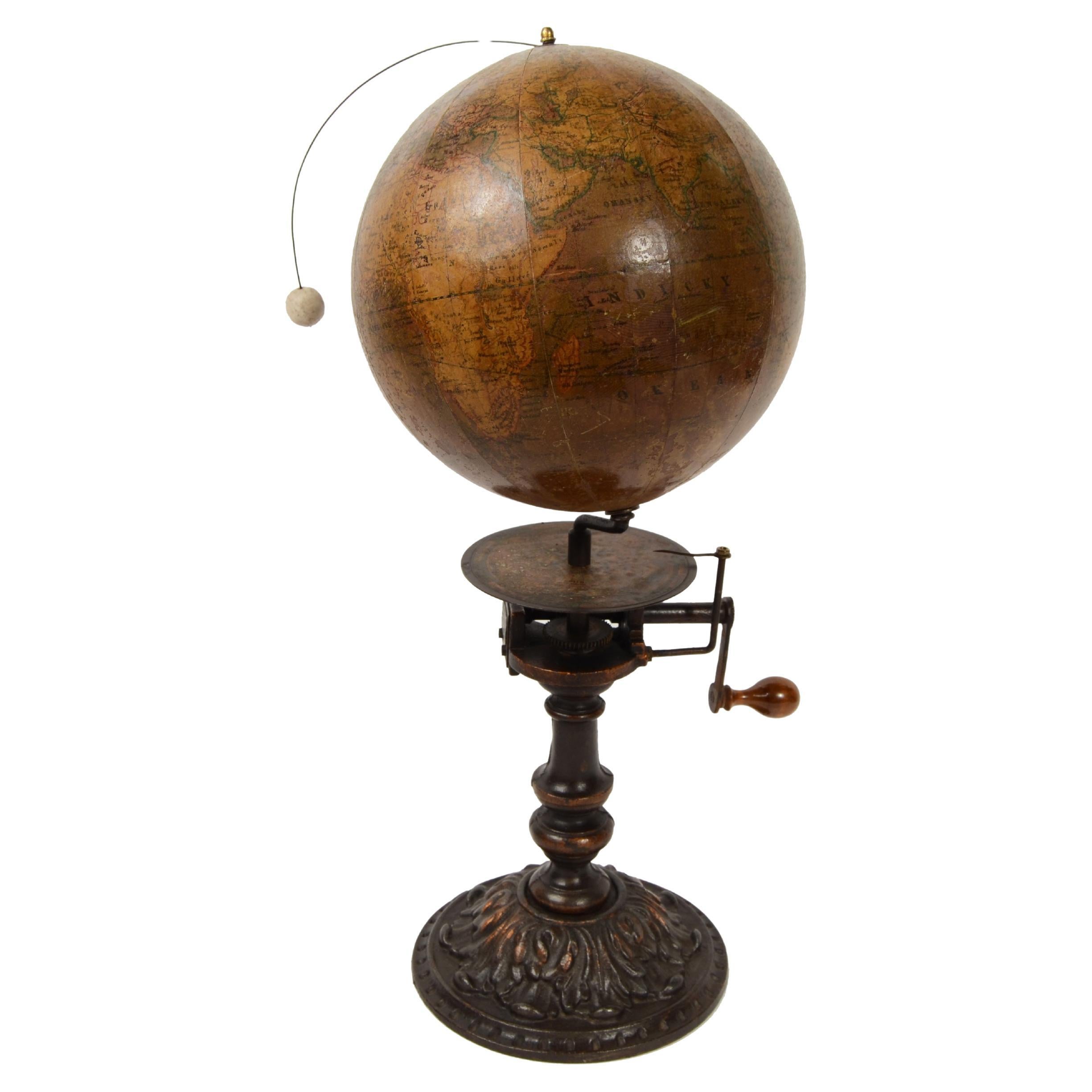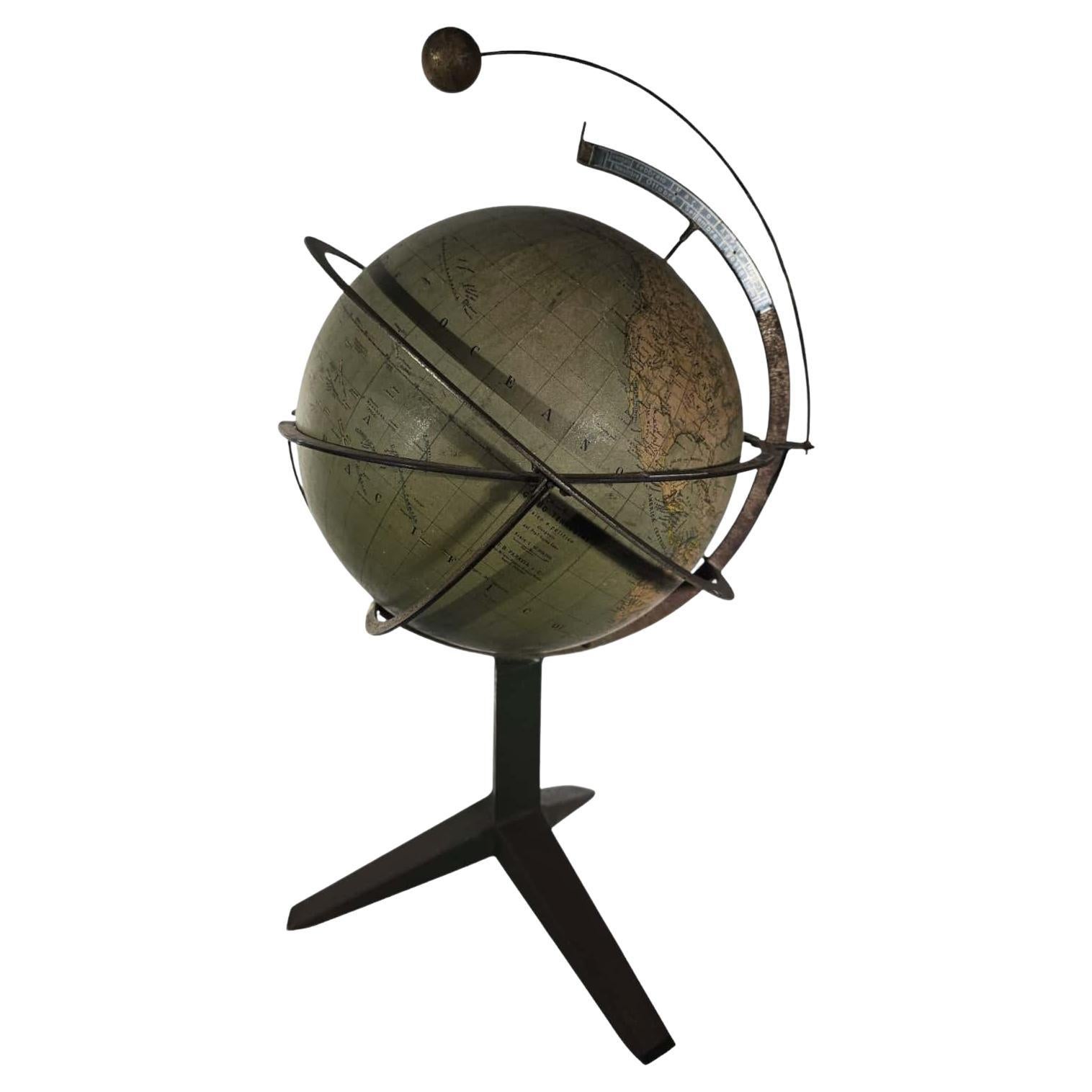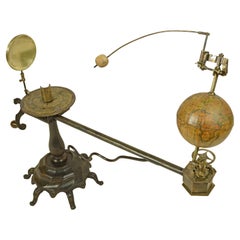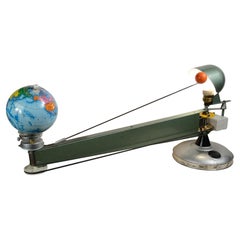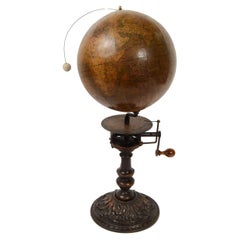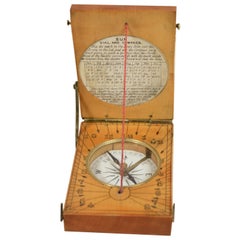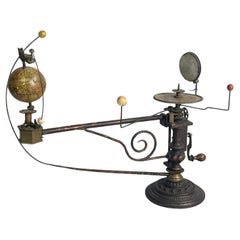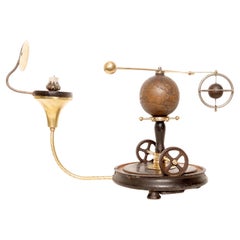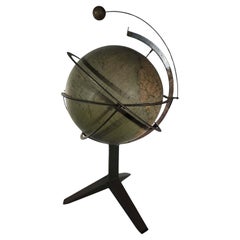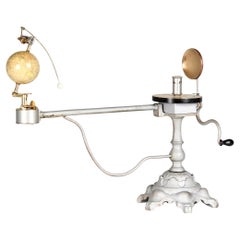Items Similar to Mechanical solar system with Sun, Mercury, Venus, Earth, Moon and Mars 1870
Want more images or videos?
Request additional images or videos from the seller
1 of 20
Mechanical solar system with Sun, Mercury, Venus, Earth, Moon and Mars 1870
$15,547.60
£11,469.83
€13,000
CA$21,523.19
A$23,337.44
CHF 12,384.90
MX$287,430.23
NOK 153,503.07
SEK 144,871.61
DKK 98,975.91
About the Item
Tellurium or representative and demonstrative mechanical model of the solar system composed of the Sun, Mercury, Venus, Earth, Moon and Mars, realized by the Prague geographer and cartographer Jan Felkl around the second half of the 19th century, the most important and famous manufacturer of globes and astronomical instruments in the Austro-Hungarian Empire internationally.
The cartouche of the globe reads: Obraz Zemekoule Vydal J. Felkl a syn Roztoky u Prahy
Bronze and brass patinated cast iron frame, brass gears, wooden planets and papier-mâché globe.
Good condition, fully functional.
Measurements 81x20x50 cm - inches 32x7.9x19.6
This is an ancient astronomical instrument consisting of clockwork mechanisms, which allows observation from the outside by operating a crank located under the gear of the Sun the motion that the Moon and Earth, Mercury, Venus and Mars make within the Solar System.
Mercury completes its rotation around the Sun in 88 days; Venus in 225 days; Earth in 365 days and Mars in 780 days.
With the establishment of the heliocentric system theorized by Copernicus, it was possible to construct simplified mechanical models of the entire known Universe, with the Earth moving about itself, while the Moon revolved around the Earth and with it around the Sun, along with all the other planets.
Related to the doctrine that the Universe moves like a giant clockwork device, the mechanical planetarium is able to represent this theory.
The complex gearing system of a mechanical planetarium ensures that the planets revolve around the Sun according to their exact relative motion.
Planetarians of these types were used for educational purposes by private tutors serving noble families throughout Europe, who entrusted them with the education of their heirs.
The mechanical planetarium is the most intricate and complex form of representation of the cosmos, representing not only the movement of the Earth but also that of the moon and planets, almost as if it were a giant clock device.
Among these devices, one of the oldest was the work of Archimedes, about whom Cicero speaks extensively in Tusculanae disputationes I, 63: when Roman troops sacked Syracuse in 212 B.C., Consul Marcus Claudius Marcellus brought to Rome the instrument of Archimedes, who, thanks to his skill and "a divine intelligence" that he possessed, had managed to generate the motions of the planets, so different from each other, from a single rotation.
Jan Felkl (1817-1878) was born in Bohemia and as early as 1840 made illustrated prospectuses for globes in 6 different sizes. Over the next twenty years, it grew to become the largest globe manufactory in the Austro-Hungarian market, producing terrestrial and celestial globes, in 17 different languages, as well as lunar, planetary and tellurian globes.
Felkl presented his globes at the 1867 World's Fair in Paris and in 1873 in Vienna.
Early globes were produced by engraving and coloring by hand the wedges.
Felkl founded his own Geographical and Lithographic Institute in Prague to produce globes and maps.
In 1870 Felkl moved the factory from Prague to Roztok and took his younger son as a partner in his company renamed Felkl & Son, producing globes for export, throughout Europe and even the United States. The business grew to employ more than 40 people, even opening a branch in Vienna. The main customers were: schools, public institutions and libraries.
After Jan Felkl's death the business was continued by the family until the early 1900s.
About the Seller
5.0
Vetted Professional Seller
Every seller passes strict standards for authenticity and reliability
Established in 1999
1stDibs seller since 2014
398 sales on 1stDibs
Typical response time: 2 hours
- ShippingRetrieving quote...Shipping from: Milan, Italy
- Return Policy
Authenticity Guarantee
In the unlikely event there’s an issue with an item’s authenticity, contact us within 1 year for a full refund. DetailsMoney-Back Guarantee
If your item is not as described, is damaged in transit, or does not arrive, contact us within 7 days for a full refund. Details24-Hour Cancellation
You have a 24-hour grace period in which to reconsider your purchase, with no questions asked.Vetted Professional Sellers
Our world-class sellers must adhere to strict standards for service and quality, maintaining the integrity of our listings.Price-Match Guarantee
If you find that a seller listed the same item for a lower price elsewhere, we’ll match it.Trusted Global Delivery
Our best-in-class carrier network provides specialized shipping options worldwide, including custom delivery.More From This Seller
View AllMechanical planetarium representative of the solar system with Sun Earth and Moon
Located in Milan, IT
Mechanical planetarium, or representative model of the solar system, from the second half of the 19th century.
The cartouche of the globe reads: GlobusVydal J. Felkl at Syn Roztok ...
Category
Antique 1860s Scientific Instruments
Materials
Metal
Tellurium mechanical/electrical model of the solar system Phiwe Italian 1950s
Located in Milan, IT
Tellurium, i.e., mechanical/electrical model representative of the solar system, made of metal with green and gray hammered paint, lithographed tin globe, plastic Moon, and metal bas...
Category
Vintage 1950s Scientific Instruments
Materials
Metal
Handcrafted mechanical lunarium with cast iron base, second half of the 19th cent
Located in Milan, IT
Handcrafted mechanical lunarium with cast iron base, second half of the 19th century, surmounted by a globe made by cartographer Jan Felkl. Turning the crank placed under the circle...
Category
Antique 1870s Globes
Materials
Metal
Engraved boxwood sun clock English manufacture mid-19th century.
Located in Milan, IT
Engraved boxwood diptych sun clock with brass hinges and locking hooks, book-shaped, mid-19th-century English manufacture. The clock has an orientation compass inserted in the base w...
Category
Antique Mid-19th Century Scientific Instruments
Materials
Wood
Brass sextant signed Imray & Son 89 & 102 Minories London mid-19th century
Located in Milan, IT
Brass sextant signed Imray & Son 89 & 102 Minories London, datable to around mid-19th century, instrument housed in its original mahogany box shaped like the instrument with hinges, ...
Category
Antique Mid-19th Century Nautical Objects
Materials
Brass
Tacheometro model Soldati late 19th c. signed La Filotecnica Milano
Located in Milan, IT
Tacheometer model Soldati from the late 19th century signed La Filotecnica Ing. A Salmoiraghi Milan serial no. 18865.
Construction site surveying and tracking tool used for calculati...
Category
Antique Late 19th Century Scientific Instruments
Materials
Brass
You May Also Like
Italian antique mechanical tellurium in brass and cast iron, mid 1800s
Located in MIlano, IT
Italian antique mechanical tellurium in brass and cast iron, mid 1800s
Mechanical tellurium made of brass and cast iron. This scientific instrument ...
Category
Antique Mid-19th Century Italian Scientific Instruments
Materials
Brass
A paradoxical orrery that demonstrates the earth-moon system. Italy circa 1860.
Located in Milan, IT
A paradoxical orrery that demonstrates the earth-moon system and its movement. The base of the planetarium is made of fruit wood, circular in shape with three bell-shaped wood feet. ...
Category
Antique Mid-19th Century Italian Scientific Instruments
Materials
Brass
Antique Orrery – Tellurium by Paravia, Torino (1900, Italy)
Located in Madrid, ES
Rare and collectible orrery (tellurium) produced by the renowned Italian maker Paravia, Torino in 1900. This finely crafted planetary model illustrates the Earth-Sun-Moon system, dem...
Category
Early 20th Century Scientific Instruments
Materials
Paper
Ancient Planet Model, Tellurium, FR. J. Berg, Stockholm, circa 1900
Located in Greven, DE
Ancient planet model so-called tellurium
Stockholm
Metal, wood, paper
around 1900
Dimensions: H x W x D: 46 x 56 x 20 cm
Description:
Display model with sun, earth and moon on hea...
Category
Antique Early 1900s Swedish Scientific Instruments
Materials
Metal
Rare paradoxical planetarium of Jupiter and the Medici satellites, France 1840.
Located in Milan, IT
This rare paradoxical planetarium demonstrates the rotation and revolution motion of the system of the planet Jupiter and the Medici satellites. The base is made of ebonized fruit wo...
Category
Antique Mid-19th Century French Scientific Instruments
Materials
Brass
French Planetary Clock InGided Brass And Marble Planetarium Tellurium
Located in Madrid, ES
French Planetary Clock In Golden Brass And Tellurium Marble, Planetarium
Rare French planetary from the 19th century in brass and Royal Red marble base...
Category
Antique Late 19th Century Scientific Instruments
Materials
Marble
More Ways To Browse
Antique Tanto
Antique Butcher Scale
Antique Measuring Devices
Antique Medical Models
Antique Planetarium
Avery Scales
Berkel Vintage
Brass Telescope On Tripod
British Compass
Edwardian Barometers
Human Brain
Molecular Model
Pocket Barometer
Salter Scale
Tripod Binoculars
W T Avery
Wooden Barometer
Antique Avery Scales
